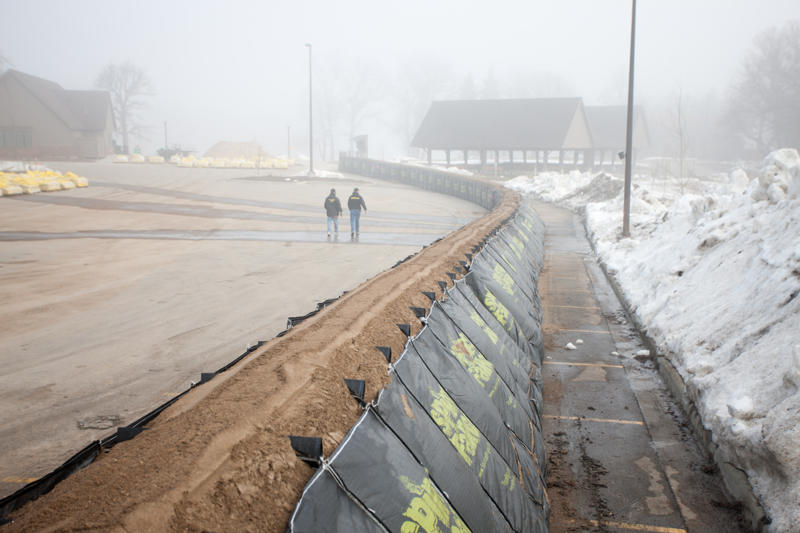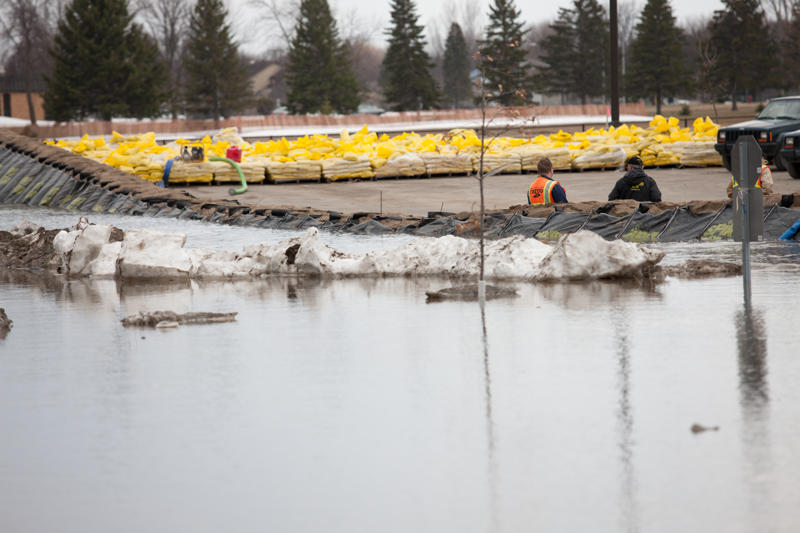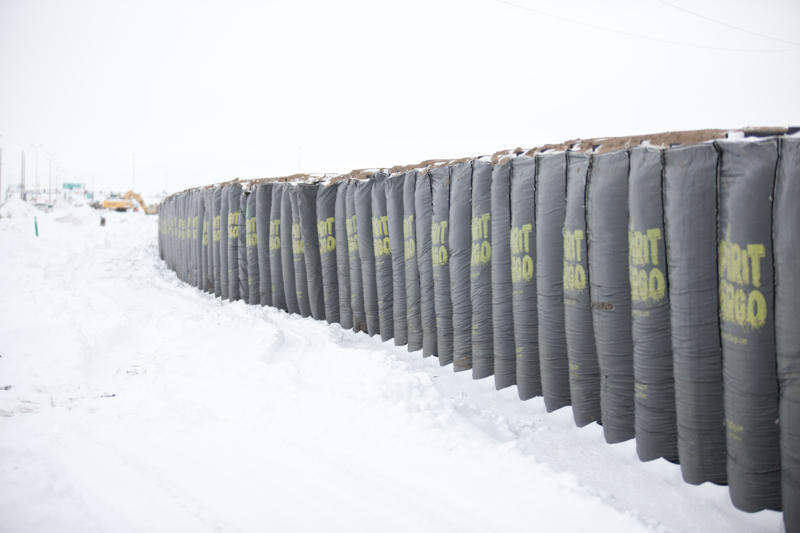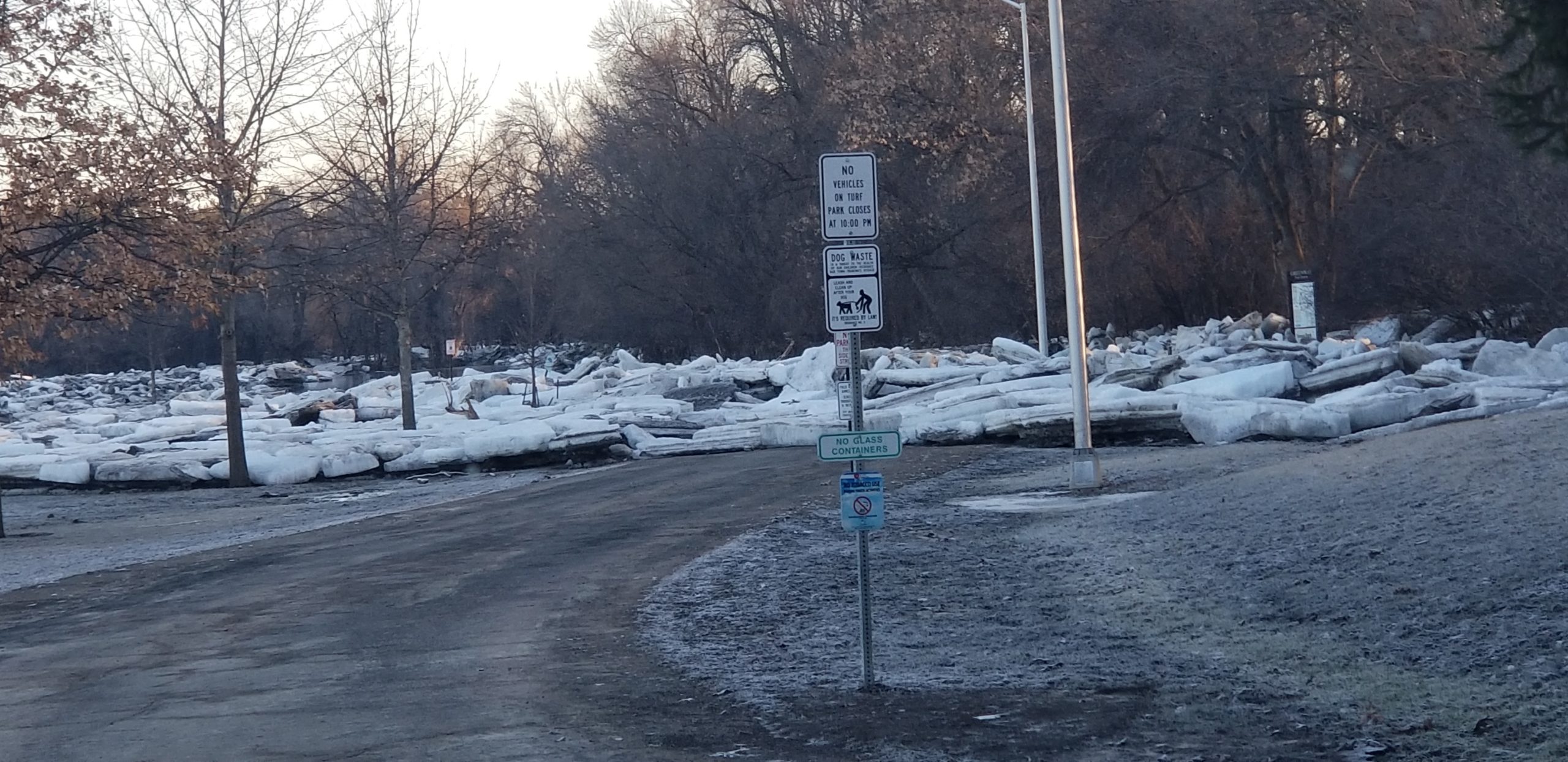Winter flooding can cause just as much damage as floods that occur during any other time of year—if not more. This is because ice jams and snowmelt flooding can cause even more damage than their warm-weather counterparts.
Discover more about what causes these winter floods and how you can keep your community safe during them with proper flood protection.
What Is Ice Jam Flooding?
Ice jam flooding occurs when large pieces of ice—called an ice jam—pile up against each other against an obstacle in a river or stream. As these pieces of ice pile up against each other, they cause the water to build up, eventually causing it to overflow upstream. Otherwise, if the ice jam suddenly breaks, it can also cause flash flooding downstream.
Ice jams can occur on any river that’s prone to freezing, particularly in the spring as river ice thaws and breaks apart. However, they can happen at any point during the winter, especially when temperatures are relatively unstable.

How Does Snowmelt Cause Flooding?
Warmer spring temperatures cause snow to melt, which eventually saturates the soil enough that it can’t absorb any additional water. Without another place to flow, the water from the snowmelt will eventually flow into streams, causing potential flooding and making other events like ice jams worse.
Why Ice Jam & Snowmelt Floods Are Dangerous
On-Shore Flood Damage
According to FEMA, it can take just one inch of floodwater in someone’s home to cause $25,000 in damage. However, flooding can potentially be even more dangerous and destructive in the winter and early spring, as it’s less likely to be absorbed by plants. Since the soil typically freezes in the winter, the ground is also less capable of absorbing water quickly.
This in turn can cause floods to reach roadways, bridges, and people’s homes. As with any flood, snowmelt and ice jam flooding can also be life-threatening when they arrive unexpectedly.
Ice Shoves
Ice shoves are a familiar problem for anyone with lake or riverfront property in cold-weather areas. Similar to ice jams, these can happen when wind and wave action pushes large chunks of ice onto shore in enormous piles.
In areas surrounding the Great Lakes, Alaska, and the Canadian interior, ice shoves are infamous for their ability to destroy houses and shatter windows. They can also overwhelm power poles and damage roadways near the water.
How to Prevent Flooding from Melting Snow
There are several different methods communities can use to prevent flooding from snowmelt. Some of the most common prevention measures include:
- Drilling holes in the ice: While somewhat unorthodox, drilling holes in the ice before it breaks apart can make it easier for water to flow through the ice pieces, making flooding less likely.
- Installing temporary dikes or dams: These temporary structures make it easier to regulate floodwaters and keep them away from vulnerable areas during periods of rapid snowmelt.
- Erecting flood barriers: Flood barriers, including water-filled flood bags or sandbags, can hold water back from property during flooding emergencies, giving people time to evacuate or protecting their homes altogether.

How to Protect Properties from Snowmelt and Ice Jam Floods
Awareness is the key to maximum flood protection during snowmelt and ice jam events. Local agencies and weather services can monitor river depths, as well as temperature forecasts.
If your area is at risk of snowmelt or ice jam flooding, it’s important to utilize emergency management agencies to protect low-lying or otherwise vulnerable areas with flood barriers. Sandbags and permanent flood doors are common solutions—however, traditional sandbags have a higher margin of error and take a long time to set up, while flood doors are often prohibitively expensive for communities where they aren’t absolutely necessary.
However, because ice jams frequently push ice ashore, it’s important to choose flood protection methods that are durable enough to withstand pressure and force. That’s where TrapBag® can help.
How TrapBag Prevents Snowmelt Flood Damage
TrapBag is a watertight flood barrier consisting of a series of interconnected pentagon-shaped bags. These flood bags are made of high-durability textiles for a design that is similar to, but improves upon, traditional sandbags. Each cell in the barrier is sloped on one side, vertical on the other, and open at the top for easy filling.
Setting up TrapBag is a quick, easy process compared to normal sandbags, requiring just three easy steps:
- Pull the barrier out and make connections: The TrapBags come in 50ft sections, they are folded up for packaging. Remove the TrapBags from the pallet and stretch the barrier out up to 50 linear feet. If the total length of protection needed is greater than 50ft, connect the multiple 50ft sections together.
- Place the barrier where needed: Place the TrapBags in the pre-determined location. The goal is to block the ice jam flooding from reaching further inland, or to divert the water where you need it to go such as in a drainage basin.
- Fill the cells: A small crew can do this with a piece of equipment (front-end loader, skid steer, etc.). We recommend filling the TrapBags with sand or gravel.
TrapBag is strong enough to protect buildings from even mudslides and mudflows—making it a great solution for protecting from the dangerous forces of ice jams and snowmelt flooding.

Protect Communities from Early Spring Flooding with TrapBag
Need to protect your community, neighborhood, or properties from winter and early spring flooding? Order TrapBag barriers today to keep what matters most safe.


